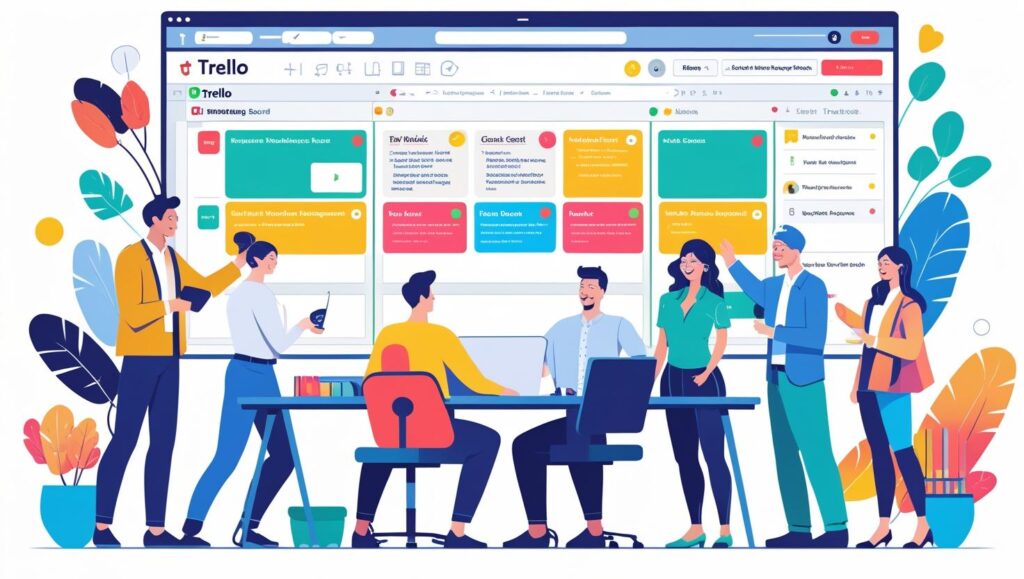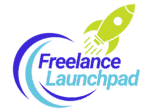You’ve meticulously crafted a compelling bio that speaks to your potential, and your portfolio, brimming with impressive projects – be they personal, pro bono, or mock-ups – is polished and ready for prime time. Yet, for many aspiring freelancers, the most formidable mountain still looms: The First Client.
The feeling is universal. You’ve put in the work, but now you face the daunting reality of a vast, seemingly oversaturated marketplace. Every job board seems to be bursting with seasoned professionals, every social media feed overflowing with established experts. Doubt creeps in: “Who would choose me when I’m just starting?” “How do I even find someone who needs my help?”
This isn’t just a challenge; it’s a rite of passage. But here’s the hard truth, backed by countless success stories: your first client is out there, and they might not even know they need you yet. They’re busy running their business, managing a charity, or simply trying to keep their head above water. They lack the time or resources to advertise for the very quality and solutions you offer.

This article isn’t about magical shortcuts or misleading tactics. It’s about empowering you with honest, actionable, and beginner-friendly strategies to cut through the noise, leverage your unique position, and land that pivotal first freelance gig. We’ll delve into how to effectively network, build your social circle, and find opportunities even in seemingly saturated markets, turning your perceived disadvantage into a powerful differentiator.
The Beginner’s Advantage: Why Being New Can Be a Superpower
Before we dive into strategies, let’s reframe your mindset. Being a beginner isn’t a handicap; it can be an advantage.
- Hunger and Enthusiasm: New freelancers are often hungrier, more eager to please, and willing to go the extra mile. Clients, especially smaller businesses and start-ups, value this drive.
- Fresh Perspective: You’re not jaded by past client experiences or stuck in old routines. You bring fresh ideas and current knowledge.
- Flexibility and Agility: Without a full client roster, you have more bandwidth to dedicate to your first few projects, offering a level of responsiveness that established freelancers often can’t match.
- Competitive Pricing (Initially): While not a long-term strategy, being able to offer slightly more competitive rates for your initial projects can be a powerful draw for budget-conscious clients. (Source: Freelance platforms often show lower initial rates for new profiles to attract first jobs and reviews).

“The Beginner’s Advantage: Why Being New
FreelanceLaunchpad.com
Can Be a Superpower“.
Embrace this unique position. Your mission is to connect with those who value these qualities.
1. Leverage Your Personal Network: The Goldmine You Already Have
This is consistently one of the most overlooked, yet most effective strategies for landing your first client. Your personal network – friends, family, former colleagues, classmates, acquaintances – is a warmer, more trusting audience than any cold lead.
The Reality: People hire people they know, or people referred by someone they trust. A study by Nielsen found that 92% of consumers trust word-of-mouth recommendations from people they know. (Source: Nielsen Global Trust in Advertising Report, 2023). This extends powerfully into the professional realm.
How to Execute:
- Make a List: Brainstorm everyone you know. Seriously, everyone. Think beyond immediate family. Former teachers, neighbors, people from your hobby groups, past co-workers, alumni from your school.
- Craft Your “I’m Freelancing!” Message: This isn’t a sales pitch; it’s an announcement. Be clear, concise, and enthusiastic.
- Example: “Hi [Name], I hope you’re doing well! I wanted to let you know that I’ve officially started freelancing as a [Your Service, e.g., graphic designer specializing in brand identity for small businesses]. I’m really passionate about helping [ideal client type] create [desired outcome]. If you or anyone you know might need [specific service, e.g., a new logo, a social media template, blog content], I’d be incredibly grateful if you’d keep me in mind or pass my name along. I’m actively building my portfolio and would love to help.”
- Personalize & Reach Out: Send individual messages (email, LinkedIn message, text). Avoid mass generic emails.
- Follow Up (Gently): A single message might get lost. A polite follow-up a week or two later (“Just wanted to follow up on my last message…”) can be effective.
- Educate Them: Many people don’t fully understand what freelancers do. Briefly explain the problems you solve (e.g., “I help businesses who struggle to get their message out by writing engaging website copy that converts visitors into customers”).
Why it Works for Beginners: Your network already has a baseline of trust in you. They are more likely to give you a chance, provide constructive feedback, and offer invaluable referrals.
2. The Power of “Giving First” & Direct Outreach (The “Unadvertised Need” Strategy)
This strategy directly addresses the “unadvertised need”! Many businesses, especially smaller ones, are overwhelmed. They know they have problems (e.g., outdated website, no social media presence, poorly written marketing materials) but lack the time, expertise, or even awareness to seek a solution.
The Reality: Businesses are always looking for ways to improve, but often lack the bandwidth to identify or solicit help. By identifying a specific need and proactively offering a solution, you become a problem-solver, not just a service provider.
How to Execute:
- Research & Identify Targets: Look for local businesses, non-profits, or small online brands that could clearly benefit from your specific service. Think about:
- Local Businesses: Restaurants with poor online menus, small shops with no social media, local charities with outdated websites.
- Online Businesses: Small e-commerce stores with inconsistent product descriptions, podcasters without show notes, bloggers with unoptimized content.
- Identify a Specific Pain Point: Don’t just say “I can build you a website.” Say, “I noticed your website’s contact form is broken, which might be costing you leads. I can fix that for you efficiently.” Or, “Your competitor’s blog has a section on [topic you’re expert in], which you’re missing. I could draft a piece for you on that.”
- Craft a Value-Driven Pitch:
- Subject Line: Make it benefit-driven (e.g., “Idea to Boost [Business Name]’s Online Presence,” “Quick Thought on Your Website’s [Specific Page]”).
- Personalized Introduction: Show you’ve actually looked at their business.
- Highlight the Problem (Gently): “I noticed [specific issue, e.g., your blog hasn’t been updated in 6 months, your social media graphics are inconsistent].”
- Offer a Specific, Measurable Solution: “I could create a content calendar for the next three months focusing on [relevant topics] to engage your audience and drive traffic.” Or “I’ve designed three new social media templates that align with your branding and can be easily adapted for daily posts.”
- Show Proof (Portfolio Link): “You can see examples of my style and approach in my portfolio here: [Link to relevant project on your portfolio].”
- Low-Commitment Call to Action: “Would you be open to a brief 15-minute call next week to discuss this further?” or “I’d be happy to send over a more detailed proposal if this aligns with your needs.”
- Consider a “Mini-Project” Offer: For truly budget-conscious clients, offer to do a small, defined project at a very low rate or even pro bono in exchange for a testimonial and permission to showcase the work. Frame it as a “trial” or “introductory offer.”
Why it Works for Beginners: It shows initiative, proactivity, and that you’re focused on their needs, not just getting a job. You’re offering a solution before they even knew they had a solvable problem.

“Research & Identify Targets: Look for local businesses, non-profits, or small online brands that could clearly benefit from your specific service.”
3. Online Job Boards & Freelance Platforms: Navigating the Crowds
Yes, these can be saturated, but they are also active marketplaces where clients are actively looking to hire. The key is to apply strategically, not just broadly.
The Reality: On average, there are 20-50 proposals for every job on major freelance platforms like Upwork. (Source: Varies by platform and niche, but widely reported for competitive categories). This means you need to stand out.
How to Execute on Job Boards (Upwork, Freelancer, etc.):
- Optimize Your Profile: Your bio and portfolio sections are paramount here. Make sure they sing!
- Focus on Niche Boards: Instead of general platforms, look for industry-specific job boards or forums. For writers, ProBlogger Job Board, All Freelance Writing. For designers, sites like Dribbble and Behance often have job sections.
- Filter Aggressively: Look for “New Client” jobs, “Entry-Level” projects, or jobs with lower budgets that established freelancers might ignore.
- Read the Job Description Carefully: This is where most beginners fail. Don’t send a generic proposal.
- Address Specifics: If they ask a question in the description, answer it. If they ask for a specific file format, mention it.
- Use Keywords: Mirror the language they use in their description.
- Demonstrate Understanding: Rephrase their need in your own words to show you “get it.”
- Craft a Hyper-Personalized Proposal:
- Opening Hook: Start with something that directly relates to their project, not a canned intro. “I noticed you’re looking for a [service] for your [type of business/project].”
- Briefly State Your Relevant Skill: Connect your transferable skills or portfolio projects directly to their needs. “My background in [X] makes me uniquely suited to [Y task you’re applying for].”
- Propose a Solution: Briefly outline how you’d approach their specific project.
- Include Relevant Portfolio Link(s): Don’t link your entire portfolio. Link to 1-2 most relevant projects that directly address their needs.
- Call to Action: “I’m confident I can deliver [desired outcome]. Would you be available for a quick chat to discuss how I can help?”
- Under-Promise and Over-Deliver (Initially): For your first few jobs, focus on getting 5-star reviews. Set realistic expectations, then blow them out of the water.
Why it Works for Beginners: While competitive, these platforms are a direct pipeline to clients with immediate needs. Your ability to craft a truly personalized and problem-solving proposal will set you apart.
The best way to predict the future is to create it!
Peter Drucker



4. LinkedIn: Professional Networking & Direct Opportunities
LinkedIn isn’t just for job seekers; it’s a powerful tool for freelancers to network, establish authority, and find direct client leads.
The Reality: 95% of recruiters use LinkedIn to find candidates (Source: Kinsta, “LinkedIn Statistics You Need to Know,” 2024). While you’re not looking for an employee role, this highlights its power as a professional search engine. Clients are using it to find freelancers too.
How to Execute:
- Optimize Your Profile (Again!): Your headline, “About” section, and “Featured” section are your prime real estate. Ensure they clearly state what you do and for whom. Link your portfolio here.
- Actively Network:
- Connect with Your Existing Network: See strategy #1.
- Connect with Industry Peers: Other freelancers, even “competitors,” can become valuable referral sources.
- Connect with Potential Clients: Identify companies or individuals in your target niche.
- Engage Consistently:
- Share Valuable Content: Curate articles, share insights, comment thoughtfully on industry news. Position yourself as a thought leader, even if you’re new.
- Join Relevant Groups: Participate in discussions, answer questions, and offer advice. This builds credibility and visibility.
- Search for Opportunities:
- “Jobs” Section: Use keywords like “freelance [your service],” “contract [your service],” or “remote [your service].” Filter by “Remote” and “Contract.”
- Company Pages: Follow companies you’d like to work with. Look for announcements that might hint at their needs.
- Direct Search: Use the search bar to find people in roles that hire your service (e.g., “Marketing Manager,” “Head of Content,” “Small Business Owner”).
Why it Works for Beginners: LinkedIn fosters trust. When you engage professionally and provide value, potential clients see you as a credible expert, even without a long history of freelance clients.
Did you Read our Previous Article?
The Power of a Portfolio: How to Showcase Your Work (Even If It’s Just Personal Projects!)
5. Social Media (Niche Communities & Value Creation)
Beyond LinkedIn, other social media platforms can be powerful tools, but they require a “give-first” mentality.
The Reality: Pure self-promotion on social media rarely works. People are on these platforms to connect, learn, and be entertained.
How to Execute:
- Identify Your Platform: Where does your ideal client hang out? Instagram for visual work? X (formerly Twitter) for quick insights and networking? Facebook Groups for community discussions?
- Join Niche Communities: Find Facebook Groups, Slack communities, Discord servers, or Reddit subreddits dedicated to your target audience or niche.
- Provide Value Consistently:
- Answer Questions: Be genuinely helpful. Share your expertise without expecting anything in return.
- Share Insights: Offer quick tips, tutorials, or observations related to your services.
- Engage Authentically: Be a real person, not just a brand.
- Soft Pitch/Subtle Promotion: Once you’ve established yourself as a valuable contributor, you can subtly mention your services when relevant.
- Example (Writer in a small business group): “Many of you are asking about website copy. I specialize in helping small businesses craft clear, compelling web content. Feel free to check out my portfolio if you need any assistance: [Link].”
- Use Visuals (for visual freelancers): Instagram, TikTok, Pinterest are ideal for designers, photographers, etc. Showcase mini-projects, before-and-afters, or process videos.
Why it Works for Beginners: It allows you to build trust and demonstrate expertise before directly asking for work. People hire those they know, like, and trust.
6. Local Meetups & Events: The Power of In-Person Connection
In our increasingly digital world, in-person interactions stand out.
The Reality: While digital connections are crucial, face-to-face networking can accelerate trust and opportunity. Local businesses often prefer to hire locally.
How to Execute:
- Find Relevant Events: Look for local Chamber of Commerce meetings, small business expos, industry-specific meetups (e.g., local marketing groups, writer’s circles, design meetups), and even non-profit events.
- Prepare Your “Micro-Pitch”: Not an aggressive sales pitch, but a concise answer to “What do you do?” Focus on the problem you solve. (e.g., “I’m a content writer, and I help local businesses get found online by creating engaging blog posts that attract their ideal customers.”)
- Listen More Than You Talk: Ask others about their businesses and challenges. You’ll often uncover unstated needs.
- Collect Business Cards & Follow Up: Personalize your follow-up email, referencing something specific you discussed. Connect on LinkedIn.
- Offer Value First: Can you recommend a resource? Share an insight? Make a connection for them?
Why it Works for Beginners: You become a real person, not just a profile. In-person connections build rapport and memorability, which is vital when you don’t have a long track record.
7. Creating a “Service Menu” with Starter Packages
Sometimes, a client hesitates because they don’t know what to ask for or fear a massive cost. Offering clearly defined, smaller “starter” packages can lower the barrier to entry.
The Reality: Many small businesses need help but have limited budgets and are wary of open-ended projects.
How to Execute:
- Identify a Common Pain Point & Small Solution: What’s a bite-sized service you can offer that provides immediate value?
- For Writers: “Website Headline Refresh Package” (5 compelling headlines for homepage + 3 services pages), “Blog Post Outline & Keyword Research,” “Social Media Post Pack” (5 posts + 5 graphics).
- For Designers: “Logo Refinement Package,” “Social Media Template Set” (3 editable templates), “Brand Style Guide Lite.”
- For VAs: “Email Inbox Cleanup & Organization,” “Basic CRM Setup,” “Travel Itinerary Planning.”
- Price Competitively (But Not Undercutting): Offer value, but don’t devalue your skills entirely. This is about getting that first foot in the door.
- Clearly Define Deliverables: No ambiguity. What exactly will they receive?
- Promote These Packages: Feature them prominently on your website, mention them in your pitches, and share them on social media.
Why it Works for Beginners: It de-risks the hiring process for the client. They know exactly what they’re getting and what it costs, making the decision much easier for someone wary of a larger commitment. This also provides perfect, contained projects for your portfolio.
The Mindset of the First Gig: Persistence and Patience
Landing your first client is rarely a sprint; it’s a marathon of consistent effort, learning from rejections, and refining your approach.
- Embrace Rejection as Feedback: Not every pitch will land. Analyze what might have gone wrong, refine your message, and move on. It’s not personal.
- Stay Persistent: The most successful freelancers are often those who simply refuse to give up.
- Focus on Value: Always, always focus on the value you provide to the client. What problem do you solve? What benefit do you bring?
- Celebrate Small Wins: Every inquiry, every positive response, every piece of constructive feedback is a step forward.
The path to your first freelance client is a journey of proactive engagement, genuine connection, and demonstrating your unique value. Armed with your compelling bio, a solid portfolio, and these actionable strategies, you are not just waiting for an opportunity – you are creating it. Go forth and land that first gig. The market is waiting for your solutions.
Did you enjoy this article? Did it help, inspire, answer some questions? What would help you further, or perhaps you felt is missing from our content that would serve you better? Let us know in the comments, we do read them all!
Your First Steps to Freelance Freedom
